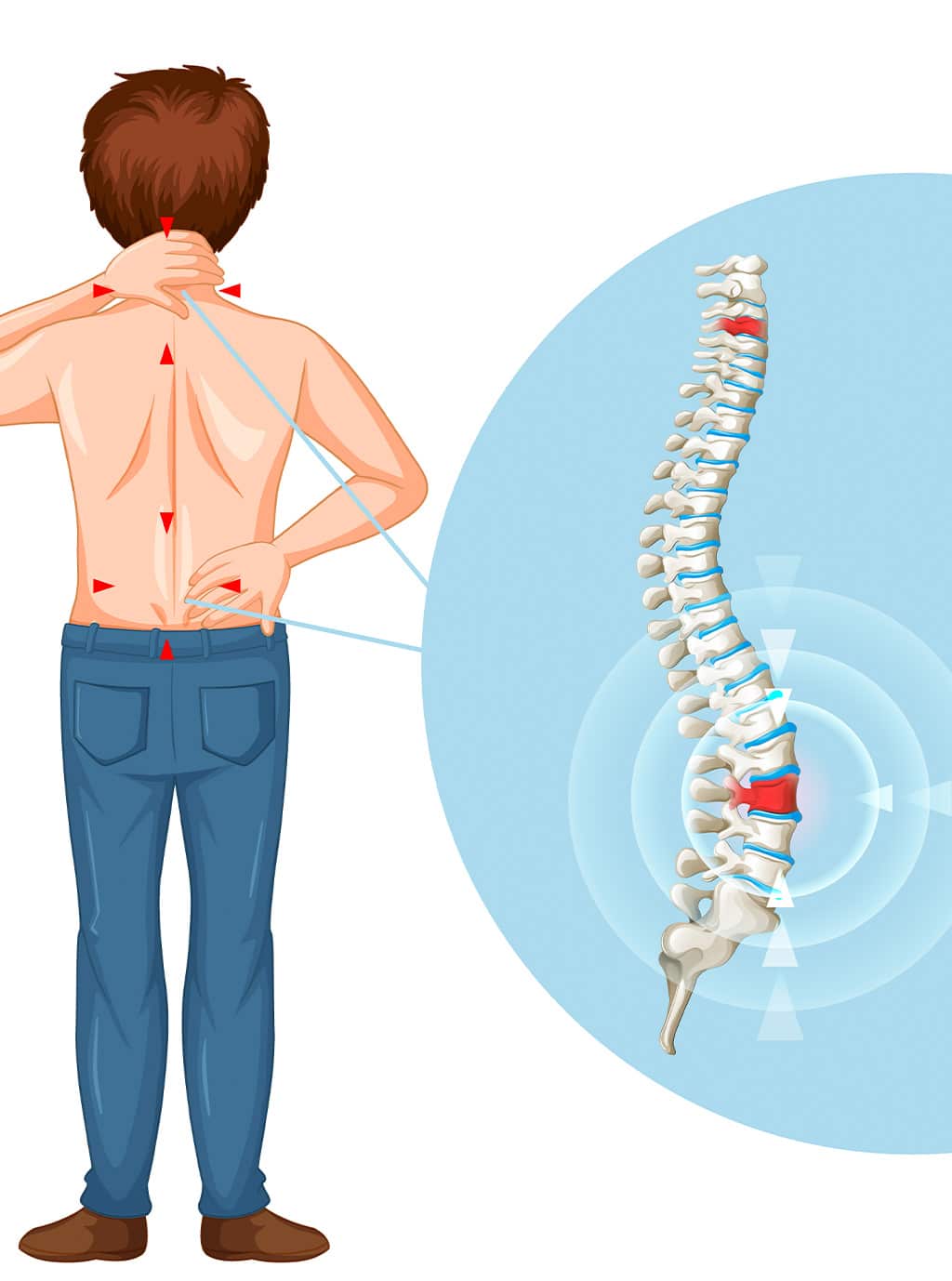
Loading. Please wait.

Loading. Please wait.
At Denville Medical, your licensed physical therapist's goal is to maximize your body's structure and increase its overall function for long-term health. To accomplish this, our physical therapists combine traditional and innovative techniques focused on increasing muscle strength and improving the body's range of motion. Our goal is to discover the root cause of your pain or mobility problems. That way, we can address the true reason why you need physical therapy, and work towards achieving long-lasting relief.
Of course, we understand that every patient is different. Your doctor can provide expert care in an encouraging environment by creating a customized treatment plan for you using modern, evidence-based research.
Some common reasons why patients need physical therapy at Denville Medical include:
1.
Sports Injuries Whether you are on the varsity team of your high school football team or a professional athlete, sports injuries are serious business. Our doctors and physical therapists will develop a plan to help you heal properly, so you can get back in the game sooner rather than later.
2.
Pre and Post Operation With decades of combined experience, our physical therapy experts know that there is a time for gentle healing and a time for aggressive physical rehab. Whether you are scheduled for surgery or have recently been released from the hospital, our therapists are here to help you recover, one step at a time.
3.
Neurological Issues At Denville Medical, we treat much more than sports-based injuries. Whether you're suffering from Multiple Sclerosis, Parkinson's, or a vestibular problem, our therapists are trained and certified to help you regain your body's optimal functionality.

Life has a habit of throwing us curveballs. Sure, some surprises only hurt your bank account, like expenses around the home. But more serious incidents, like car wrecks, can inflict physical injuries causing long-term pain. Injury-related problems like neck and back pain affect many Americans daily. Even worse, many hardworking people turn to addictive pain medication and invasive surgeries for relief, only to find themselves deeper in a hole.
If you're in chronic pain or suffer from range of motion problems, you should know that options are available for safer, more effective pain relief. One of the most commonly used solutions is physical therapy. The main goal of physical therapy is to maximize your body's mobility and increase overall function. In order to accomplish this, physical therapy techniques focus on improving range of motion and building muscle strength.
Physical therapy helps people of all ages with illnesses, medical conditions, or injuries that limit their mobility and body functionality. At Denville Medical and Sports Rehabilitation Center, our doctors and physical therapists create customized physical therapy programs to help patients reclaim their lives.
When combined with diet and exercise, many patients are able to enjoy activities that they only thought possible with youth.
Some of the most common techniques that physical therapists use to help patients include:
From improper ergonomics at your office desk to injuries sustained in car wrecks, neck pain is a widespread problem. Taking the proper preventative steps to deal with pain provides relief and can prevent the need for surgery or medication.
Generally, there are two kinds of neck pain: chronic and acute. Acute pain shouldn't last for more than six weeks, while chronic pain can last months or even years. Physical therapy is one of the most recommended treatments for neck pain. Treatments often involve reducing neck exercise, strength training, and stretching. If you're suffering from acute or chronic neck pain, it's important to have tests done by a physical therapist to determine the extent of your injury.
Neck pain is caused by a wide range of problems, like:
After identifying the underlying cause of your condition, your physical therapist will develop a comprehensive treatment to address your pain and provide long-term relief.

Back pain is one of the leading causes of disability in America. Back pain can start innocuously as a small muscle ache but can quickly become a more serious problem that disrupts daily life. Like neck pain, the best way to address the issue is to understand the root cause so that surgery is avoided.
Also like neck pain, back pain is either chronic (longer than six weeks) or acute (less than six weeks). Back pain can be caused by a number of events, like lifting a heavy item or simply sitting wrong for too long. To determine the extent of your injuries, you will need one or more diagnostic tests, like X-rays or MRI scans. Once the root cause of your condition is revealed, your physical therapist will work with Denville Medical doctors to create a treatment plan tailored to your body.
Common conditions linked to back pain include:

Experiencing a herniated disc is something most people dread, but many have to endure. Luckily, PT plays a significant role in herniated disc recovery. Physical therapy not only provides immediate pain relief, it teaches patients how to condition their bodies to avoid worse injuries.
At Denville Medical, our physical therapists and doctors have years of experience helping patients rehabilitate from herniated discs. Patients benefit from several time-tested techniques to relieve pain.
After diagnostic testing, active and passive treatments can include:

Do your hips feel uneven or misaligned? Do you suffer from hip stiffness or pain when the weather changes? Are you having trouble getting around the house like you used to? Your hips bear most of your weight, so it's no surprise that hip pain is very common among Americans.
Fortunately, physical therapy has been proven to provide relief for people dealing with acute or chronic hip pain. As with other forms of pain, you will need diagnostic testing to determine the extent of your hip problems.
Some common causes of hip pain include:
Once your hip issues are properly diagnosed, it's time to find relief. Denville Medical & Sports Rehabilitation Center offers several custom solutions, including acupuncture, chiropractic care, and personalized physical therapy.

Like hip pain, knee pain is a common condition in the U.S. and affects millions of people every year. Pain in the knee is caused by many things, including strains, injuries, age, and repetitive trauma. Sometimes, there's no apparent reason for knee pain. When it occurs, you may experience limited knee functionality, like difficulty standing, walking, sitting, and walking up and down stairs.
There are many conditions associated with knee pain, including:
If you notice symptoms like clicking or popping sounds, locking, inflammation, or sharp pains in your knee, physical therapy might be your best bet for relief.

Sometimes, surgery is the only option a patient can choose to alleviate pain from injuries and accidents. When this is the case, physical therapy plays a vital role before and after surgery.

To help you get a better sense of the scope of our physical therapy treatments, we're listing some of the most frequently asked questions that we receive at Denville Medical:
Answer : While some physical therapists rely on outdated techniques to treat patients, our team uses a combination of tried-and-true methods and modern strategies, including:
Answer : During your first visit with our physical therapist, we will complete a series of tests and screenings to establish a baseline for your care. You can expect to complete stability screenings, strength tests, and computerized range of motion tests. These tests ensure your doctor understands how your muscles are functioning. Once complete, your therapist will create a custom treatment plan for your physical therapy, so we can move forward with your care. During your time at Denville Medical, you should expect adjustments to your treatment plan as you make progress.
Answer : We get this question a lot, and we can certainly understand why. Unfortunately, we cannot provide you with an exact answer because every patient has different needs relating to their injuries and issues. Your level of stability and functionality depends on your condition, your goals, and your motivation to heal. For acute pain, patients typically experience relief in 2-3 weeks. Patients with forms of chronic pain usually feel optimal results after their first full course of therapy (4-6 weeks). Since our goal is to achieve maximum medical improvement, our doctors continuously monitor your progress and adjust treatment accordingly.
Whether you're dealing with chronic knee pain or acute back pain, relief is in sight. Rather than dangerous medicines and invasive surgeries, we specialize in non-surgical treatments like physical therapy. Our team of physical therapists, chiropractors, acupuncturists, and primary care doctors have years of experience and work hand-in-hand to give you real pain relief.
If you're sick and tired of living life full of physical pain, now is the time to act. Don't let your body deteriorate – find your new lease on life at Denville Medical and Sports Rehabilitation Center.
 973-627-7888
973-627-7888
WATERFORD - The New Jersey Forest Fire Service has reported "significant progress" in bringing a Wharton State Forest wildfire under control, even as the blaze grew to 1,500 acres and spread from Waterford to Medford and Shamong.As of 10:30 a.m. Tuesday, the blaze was 85 percent contained, the fire service said.But the agency added, "An observational flight this morning indicated that there are internal pockets of unburned fuel that will continue to burn today."It said no buildings were...
WATERFORD - The New Jersey Forest Fire Service has reported "significant progress" in bringing a Wharton State Forest wildfire under control, even as the blaze grew to 1,500 acres and spread from Waterford to Medford and Shamong.
As of 10:30 a.m. Tuesday, the blaze was 85 percent contained, the fire service said.
But the agency added, "An observational flight this morning indicated that there are internal pockets of unburned fuel that will continue to burn today."
It said no buildings were threatened by the fire, which had been 75 percent contained at 9:30 p.m. Monday.
The fire's containment area includes forested land in Medford and Shamong and some along Jackson Road in Waterford, where flames broke out Sunday night near the former Atco Dragway.
Jackson Road was closed shortly from Atsion Road to Tremont Avenue before noon Monday and will remain closed until further notice, the fire service said.
No other road closings were expected.
Camden County officials urged motorists to find alternate routes around the fire.
The county's department of public safety was ready "to support the state with any needs they have while they fight this wildfire in Waterford,” County Commissioner Jonathan Young, the agency's liaison, said Monday.
“Nevertheless, and maybe more importantly, we need drivers to stay off Jackson Road in that area, so the firefighters can do their work and (to benefit) the health and welfare anyone entering the area by car.”
Who's failing on air quality in SJ?How is air quality in South Jersey, and what's being done to improve it?
When initially spotted early Sunday night, the fire was estimated at 100 acres along Jackson Road.
By 10 a.m. Monday it had spread to another 400 acres. A few hours later, it had tripled in size.
The Fire Service said crews used "a backfiring operation (Monday) to burn fuel ahead of the main body of fire throughout the day."
The agency said the fire was reported around 5:30 p.m. by its Medford firetower, then was triangulated by the Apple Pie Hill tower in Tabernacle.
Atco Dragway, also on Jackson Road, closed abruptly in mid-July. It announced the shutdown in a Facebook post that gave no reason for the track's demise after 63 years.
Visit https://twitter.com/njdepforestfire for other information.
This story will be updated.
Ascend Wellness Holdings Inc. is leaving Montclair.Following the New Jersey Cannabis Regulatory Commission’s Dec. 7 approval of its location change application, the Massachusetts-headquartered multistate operator plans to move retail operations about 23 miles to Wharton.Currently located at 395 Bloomfield Ave. in Montclair, the facility was the first alternative treatment center to launch in New Jersey following the state’s legalization of medicinal c...
Ascend Wellness Holdings Inc. is leaving Montclair.
Following the New Jersey Cannabis Regulatory Commission’s Dec. 7 approval of its location change application, the Massachusetts-headquartered multistate operator plans to move retail operations about 23 miles to Wharton.
Currently located at 395 Bloomfield Ave. in Montclair, the facility was the first alternative treatment center to launch in New Jersey following the state’s legalization of medicinal cannabis, opening as Greenleaf Compassion Center. In 2021, it was acquired by Ascend and rebranded as part of the MSO’s family of dispensaries.
Since then, Ascend has opened two other brand new stores selling recreational and medicinal cannabis in New Jersey – Fort Lee in August 2022 and Rochelle Park in May 2021.
In Wharton, Ascend plans to launch at 325 Route 15 N., a former CapitalOne bank location that the company found desirable because of its ample parking and proximity to highways.
During a May appearance before the Wharton mayor and council, the company told officials it wanted to leave downtown Montclair because the area was “oversaturated” and believed the new location would help hit an underserved market.
Along with community engagement, local job creation and other outreach efforts, Ascend representatives said Wharton would stand to see about $460,000 in revenues through the excise tax based on the average New Jersey dispensary run rate of $23 million annually.
Wharton was among the 80% of municipalities across the state that opted out of allowing cannabis sales; however, in June, officials reversed course and lifted the restrictions.
“The timeline for us moving out is late summer or early fall. We are excited about moving to our location in Wharton New Jersey,” a spokesperson for Ascend told NJBIZ, adding, “Plans are already underway to turn the existing Montclair store over to social equity license holders.”
Editor’s note: This story was updated at 8:45 a.m. ET Dec. 11, 2023, to include a statement from Ascend.
A joint venture between Wharton Industrial and Walton Street Capital has sold Twinbridge Industrial Park, a 1.3-million-square-foot industrial portfolio in Pennsauken, for $194.5 million, in one of the largest industrial deals in New Jersey this year.An affiliate of New York-based DRA Advisors bought the 37-building portfolio. The average building is 35,000 square feet.In 2020, New York-based Wharton and Chicago's Walton bought the ...
A joint venture between Wharton Industrial and Walton Street Capital has sold Twinbridge Industrial Park, a 1.3-million-square-foot industrial portfolio in Pennsauken, for $194.5 million, in one of the largest industrial deals in New Jersey this year.
An affiliate of New York-based DRA Advisors bought the 37-building portfolio. The average building is 35,000 square feet.
In 2020, New York-based Wharton and Chicago's Walton bought the portfolio from The Bloom Organization. At the time, it totaled 32 buildings and 1.16 million square feet. Wharton and Walton bought a few additional buildings since then to add to it. The site is 10 miles from Philadelphia's Center City.
“We really believed in the real estate close to Philadelphia,” Wharton Industrial Chairman Peter C. Lewis said. “It’s irreplaceable. You can’t build this anymore. There’s no more land left and you can’t get approvals. The proximity to Philadelphia is perfect."
The industrial park is close to routes 73,130, Interstate 295, and both the Betsy Ross and Tacony-Palmyra bridges into Philadelphia. PepsiCo leases space at 8275 N. Crescent Blvd. Rental car company Enterprise leases space at 9345 N. Crescent Blvd.
Properties also include three buildings totaling 153,400 square feet at 809 Hylton Road, 815 Hylton Road and 1045 Thomas Busch Memorial Highway that Wharton acquired with Walton Street in 2021.
Lewis declined to share how much Wharton Industrial paid for the Twinbridge Industrial Park portfolio. In recent years, the Philadelphia region’s industrial market has seen low vacancies and record rents, increasing the value of properties like the one Wharton just sold.
Wharton increased rents for tenants from $5 or $6 per square foot up to $12 per square foot, a testament to the high demand and low supply of the Philadelphia industrial market. The portfolio is now 97% occupied. On average, the 37 buildings were built in 1983.
Tenants include Lockheed Martin, Sprint, PepsiCo’s SodaStream and BlueTriton, which was previously known as Nestle Waters.
“It’s a mixture of credit, but a lot of it is decades-old companies or family businesses or small businesses that just pay their rent and they’re good tenants and they service the market,” Lewis said. “I love that kind of tenant.”
Wharton planned to sell the portfolio eventually, but Lewis wasn't sure of the timing. Given that high interest rates have limited buyer pools, Lewis initially thought of waiting. Once interest rates subside, there could be more potential buyers yielding a higher price.
But other sellers of comparable properties had a similar mentality. Since few comparable properties are selling, brokers convinced Lewis the portfolio could generate competition among buyers, making it an advantageous time to test the market. Lewis followed their advice and closed the deal despite the challenging financing environment. By being one of the few sellers in the market, Wharton was able to more easily attract the few buyers looking for deals.
CBRE’s Brad Ruppel, Mike Hines and Liam Fahey along with Colliers’ Marc Isdaner and Ian Richman represented Wharton Industrial. Isdaner and Richman brokered the 2020 sale as well.
When Wharton bought the portfolio in the summer of 2020, Lewis said there was uncertainty because of the Covid-19 pandemic. How long it would last and how it would affect the economy was still to be determined.
Lewis believed in Philadelphia and the fundamentals that made it a promising investment.
“The market is very tight,” Lewis said. “What you had historically in Philadelphia, and this is not uncommon in a lot of markets, is long-term owners who were just happy filling the buildings. No one really wanted to take the lead in pressing too hard on rents. They were doing well as it was. We didn’t fall into that school of thought.”
Wharton Industrial was formed in 2017 and owns or is developing 11 million square feet of industrial space worth more than $1 billion in transactions. Wharton, for example, is currently developing a 1.5 million-square-foot light industrial project in Mesa, Arizona.
CHERRY HILL, NJ — A large South Jersey wildfire has been largely contained. Its stench? Not so much.Some of Cherry Hill's air has smelled different in recent days. That "strong odor" stems from the recent brush fire at Wharton State Forest, according to the township fire department.The fire should not cause concern in Cherry Hill, officials said."Higher humidity and winds shifting has caused surrounding areas to smell like smoke as well," the Cherry Hill Fire Department said Thursday.The ...
CHERRY HILL, NJ — A large South Jersey wildfire has been largely contained. Its stench? Not so much.
Some of Cherry Hill's air has smelled different in recent days. That "strong odor" stems from the recent brush fire at Wharton State Forest, according to the township fire department.
The fire should not cause concern in Cherry Hill, officials said.
"Higher humidity and winds shifting has caused surrounding areas to smell like smoke as well," the Cherry Hill Fire Department said Thursday.
The Dragway Wildfire was discovered Sunday afternoon, burning around Jackson Road in Wharton State Forest and near the shuttered Atco Dragway in Waterford Township. The fire grew to 1,700 acres, with the containment area extending to Medford and Shamong in Burlington County.
Crews contained 95 percent of the wildfire as of 6 p.m. Tuesday. No injuries were reported, and no structures were under threat, according to the New Jersey Forest Fire Service. Read more: South Jersey Wildfire Contained, Cause Under Investigation
Although the blaze has been largely contained, smoke may remain visible for an extended period of time as firefighters mop up the fire, the state forest fire service said.
Wildfire impacts in South Jersey have been prevalent during recent months. Significant fires have popped up in the region's woodlands since the spring, while smoke from eastern Canada's wildfires impacted South Jersey's air quality earlier this year.
Fire officials around the Garden State have warned residents of the increased potential for forest fires in 2023, as the lack of snow in South Jersey this winter has prevented pine needles and leaves from compacting. The result: this "ground fuel" may rapidly dry out on breezy or windy days that are at high risk for wildfire.
While 99 percent of wildfires in the state are attributed to human carelessness, accidents or arson, the riskier peak wildfire season may actually be extended due to changing climate patterns, state officials said.
“The continuing impacts of climate change mean our state is experiencing more severe weather conditions, storms, wind and drought that can result in a longer wildfire season, which is why it is more important than ever that the public exercise caution and take steps to help protect their homes and property,” New Jersey Environmental Protection Commissioner Shawn M. LaTourette previously said in a statement. “Preventing wildfires also helps avoid catastrophic releases of carbon that contribute to and exacerbate climate change.”
Meanwhile, climate change made Quebec's fire season 50 percent more intense through the end of July, according to a recent report from World Weather Attribution, which calculates climate change's role in extreme-weather events.
WATERFORD TOWNSHIP, N.J. (CBS) -- A wildfire at the Wharton State Forest in Waterford Township, Camden County that grew to 1,700 acres is now 100% contained.New Jersey Forest Fire Service said Wednesday the fire was contained as of 10 a.m. and Jackson Road was reopened around noon.They did say the Wharton State Forest might close Wednesday evening beca...
WATERFORD TOWNSHIP, N.J. (CBS) -- A wildfire at the Wharton State Forest in Waterford Township, Camden County that grew to 1,700 acres is now 100% contained.
New Jersey Forest Fire Service said Wednesday the fire was contained as of 10 a.m. and Jackson Road was reopened around noon.
They did say the Wharton State Forest might close Wednesday evening because of smoke conditions in the area.
The wildfire, named the "Dragway Wildfire," was expected to take crews two to three days to contain.
"Here in New Jersey, just seems like we're having wildfires 12 months a year, 365 days a year," Bill Donnelly, the assistant state fire warden, said.
The NJFFS said the wildfire's containment area includes land in Medford and Shamong in Burlington County.
The NJFFS says this fire marks the 13th major wildfire just this year. Compare that to last year at this time – where there were only two major wildfires.
The cause of the fire remains under investigation and no injuries were reported.
The CBS News Philadelphia Staff is a group of experienced journalists who bring you the content on CBSPhiladelphia.com.
